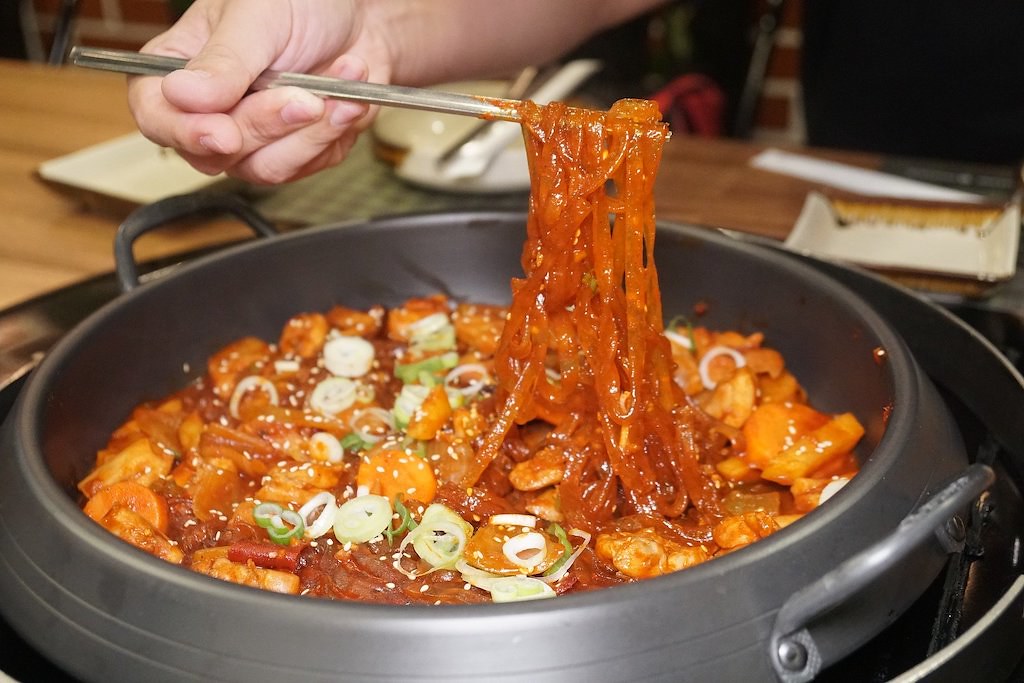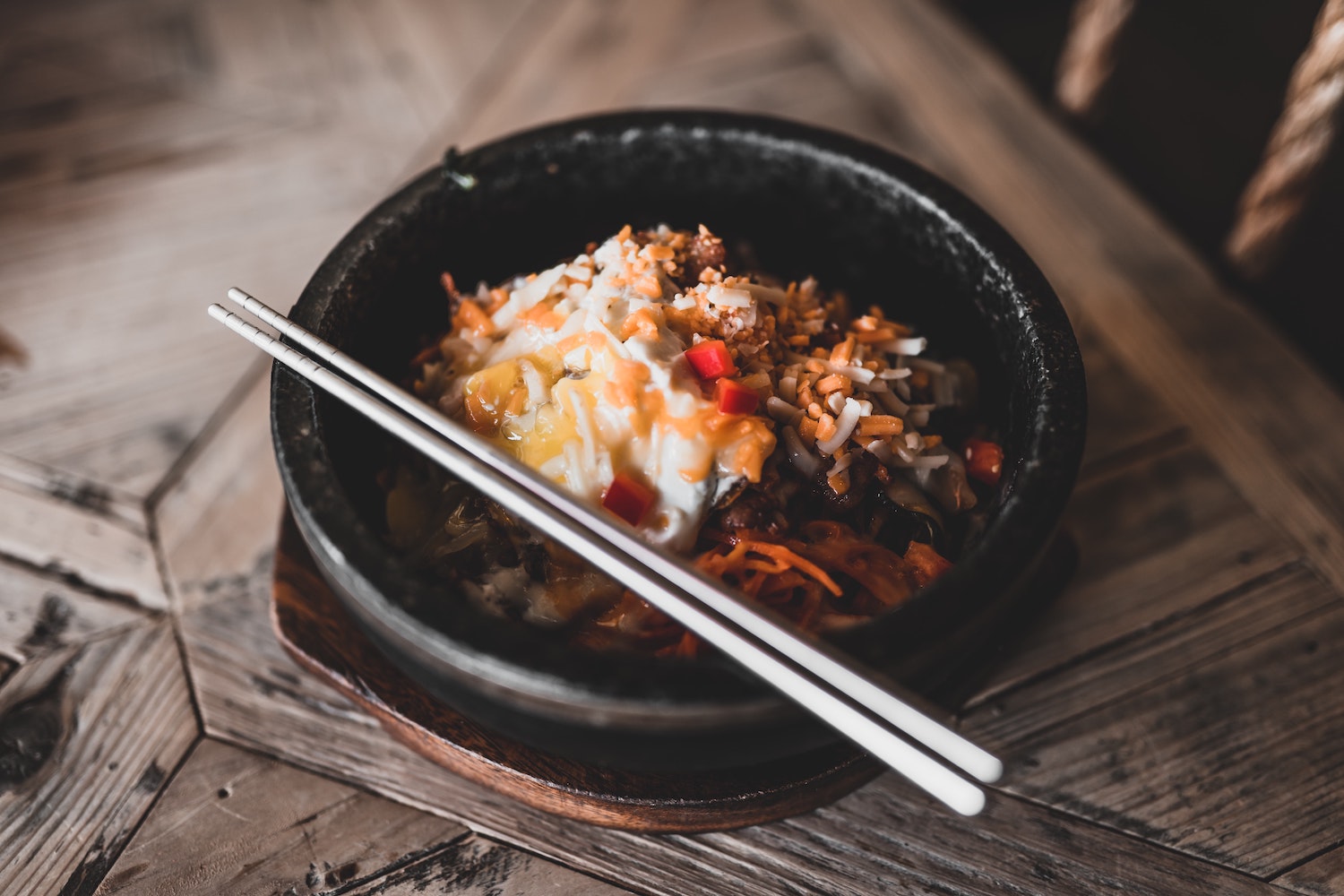This post may contain affiliate links. Please read my disclosure for details at the bottom of this page. As an Amazon Associate, I earn from qualifying purchases on this post about Korean chopsticks.
Recently, on Carving A Journey, I decided to begin an in-depth study on traditional Korean cooking and serving tools. After all, as I stated before in the ttukbaegi vs dolsot comparison article, these tools are an integral part of both North and South Korean food culture. On the blog, we have learned about:
- Onggi: Traditional Korean earthenware pots used for a multitude of different culinary purposes
- Ttukbaegi (or ddukbaegi): A particular type of earthenware pot used for cooking and serving
- Dolsot: A traditional stoneware pot used for cooking and serving
In this post, we will focus on learning about Korean chopsticks–First, I will answer common questions about Korean chopsticks such as ‘why are Korean chopsticks metal’ and ‘why are they flat.’ Then, I give hints about proper chopstick etiquette.
Why Are Korean Chopsticks Metal?
Across East Asia, people used chopsticks for cooking and eating for thousands and thousands of years. When eating different cultural foods with chopsticks, you may notice that some cultures use chopsticks made of wood or ceramics, while others use metal or plastic.
For the most part, the use of metal chopsticks is unique to Korean culture.
Nowadays, most chopsticks in South Korea are made from stainless steel. In the past, during different eras, chopsticks were made from silver, gold, or brass.
No one knows for certain why Korean chopsticks are metal, but there are a few theories:
- Poison: One theory explains that metal chopsticks originated during the Baekjo Era (18 B.C.- 660 A.D.) At this time, royalty and wealthy aristocrats switched to metal chopsticks to help identify and detect poison in their food. The silver spoons and chopsticks would discolor when they came in contact with unknown poisonous chemicals. Then, commoners began to use metal chopsticks in admiration of their King.
- Sign of Wealth: During the Baekjo Era, owning metal chopsticks was used as a sign of wealth and social status. During this era, commoners used wooden or brass chopsticks, while gold and silver were reserved for royalty.
- Hygiene: People believe that metal chopsticks continued in popularity after the Baekjo and Joseon Dynasties because they are hygienic and eco-friendly. In restaurants and homes, it is easy to clean these chopsticks. Traditionally, restaurants would clean them using boiling water, but now restaurants often use high-tech electric sterilizing units.
Note: While metal is the most common type of chopsticks in restaurants, these days, artisan wooden chopsticks are becoming increasingly popular in Korean households. If you watch Korean cooking channels on Youtube, you may notice a beautiful wooden sets of spoons and chopsticks made available by small artists in South Korea.
Why Are Korean Chopsticks Flat?

Eating Korean Barbecue With Chopsticks
Beyond being metal, Korean chopsticks have another unique characteristic–Many manufactured chopsticks are flat instead of round or square. The exact reason for flat chopsticks is unknown, but most people believe it is simply for practical reasons. The flat shape is easier to shape and manufacture. It also uses less material. Finally, it is easier to match with a typical spoon handle in a set.
Korean Chopstick and Spoon Sets: ‘Sujeo’
Unlike many other East Asian cultures, people in Korea serve every meal with a set made of chopsticks and a spoon. Together, people use the ‘sujeo’ (수저) to describe the set of utensils. This word is a combination of two words ‘sukgarak’ (숟가락) meaning spoon and ‘jeotgarak’ (젓가락) meaning chopsticks.
Often, people use the spoon to consume soups, stews, and rice while they use chopsticks to consume banchan (side dishes) and main courses. In Korea, you can buy spoons and chopsticks in a matching set or separately.
Korean Etiquette: Tips for Chopsticks
Below, we list some etiquette for using chopsticks in Korea. If you have any further questions about etiquette, feel free to leave a comment or email us at [email protected]! For further Korean etiquette, you can check out our blog post listed some table manners considered polite in South Korea.
- Never Stick Chopsticks in Rice: When not using chopsticks, always place them next to your bowl and plate. Never rest your chopsticks by sticking them into the bowl of rice. When stuck in rice, it resembles incense burned during funerals and ancestral rights.
- Eat What You Touch: In South Korea, food is shared amongst the whole table. When picking up food with your chopsticks, always take it and place it in your bowl, even if you do not wish to eat it. It is considered rude and unsanitary to pick something up and set it back down from the shared dishes.
- Elders First: Always wait for elders to pick up their chopsticks and begin eating before you pick up your own. It is considered respectful.

Eating Delicious Noodles With Korean Chopsticks.
We Hope You Enjoyed Learning About Chopsticks In Korea!
In the end, we hope you enjoyed learning about Korean chopsticks. If so, let us know in the comment section below.
If you would like to read more about cooking, you can find further recipes on our blog. We listed some of our favorite Carving A Journey Korean recipes below! For reference, many recipes are influenced by our blended Korean and Southern heritage.
Korean Tool Articles:
- What Is a Korean Ttukbaegi?
- What Is a Korean Dolsot?
- Ttukbaegi vs Dolsot: What Is the Difference?
- What is a Traditional Korean Onggi?
Carving A Journey Korean Recipes:
- Greek Momo Recipe (Korean Breakfast Trend)
- Tteokkochi (Korean Rice Cake Skewers)
- Jumeokbap (Handmade Korean Rice Balls)
- Bibimmyeon (Korean Spicy Cold Noodles); And
- Oi Muchim (Spicy Korean Cucumber Salad)
If you have any questions or comments, you can also email us at [email protected].
And, finally, we would love to hear from you through our social media as well! You can follow us at @carvingajourney on Instagram, Twitter, Facebook, and Pinterest. Or, if you would like more articles like these, you can subscribe to our blog by joining our mailing list. We hope you enjoyed learning about Korean chopsticks! Thank you so much for stopping by!


2 comments
Flat chopsticks are an option, not the norm. In my own experience, “flat” chopsticks make eating noodles much easier, but they are a bit of a pain for anything else.
Hi! Thank you for the comment! Yes, as you said, some restaurants in Korea chose to use other chopsticks rather than the flat variety. When living extensively in South Korea, and spending time with my husband there (he was born and raised in Seoul), I found that both types were common. It just depends on the preference of individual households and restaurants, but I definitely still find them to be the norm. All that being said, I wanted to mention the flat chopsticks variety because I get many questions on the subject–they are still used and important to Korean culture and history! At first, I found them difficult to eat with, but now I’m used to them!